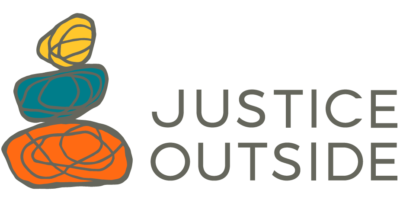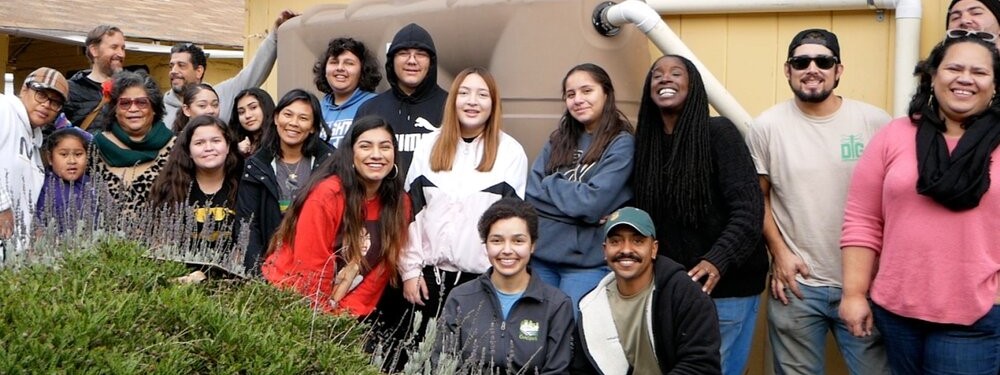The United Nations Climate Change Conference, also referred to as COP27, will take place this year in Egypt on November 6-18. This year, the focus of COP27 is to move from negotiations and planning to implementation. The three main objectives of the conference are mitigation, adaptation, and climate finance. Countries will have to show how they plan to reduce emissions, how they will adapt to climate consequences to keep people safe, and how resources and financial support will be distributed to countries suffering some of the worst climate consequences, but not receiving the resources they deserve from the global community. Black, Indigenous, and Communities of Color have been at the forefront of building solutions to face climate change and are already putting them into action. It is the government officials and leaders that need to follow their lead, not the other way around.
There are currently 30,000 people registered to attend COP27, including members of the public. Spaces like these need to have an intersectional approach because while we are all living on the same planet, climate change is disproportionately impacting communities most marginalized by capitalism and political disenfranchisement. It’s essential that the voices and solutions being created by Black, Indigenous, and Community Leaders of Color are center stage in the climate change conversation.
Justice Outside spoke with Caroline Beckman, Resilient Homes Program Manager at Climate Resilient Communities, one of our grantee partners working at the community level, who shared what the United Nations can learn from centering local action and youth voices and taking an intersectional approach in the ongoing effort to mitigate climate change.
Will you share a little bit about your work for people who may not be familiar?
At Climate Resilient Communities (CRC) we are trying to not only think about the vulnerabilities or what the communities don’t have but instead, what they do have which is a tremendous amount of resilience. Even in the name of our organization, Climate Resilient Communities, it’s not just about trying to build resilience but also uplifting the resilience that is already innately there. Our communities are already building knowledge, building connections, building their capacity to respond to changes, and adapting to incorporate specific needs and priorities coming from residents on the ground. That framing is important to our work, that it’s not about what we don’t have but it’s about what is already there and how we can make it even stronger and better.
We work with residents in San Mateo County and Santa Clara counties on tangible projects that take place across a variety of scales. I manage the Resilient Homes Program which works with homeowners to retrofit and improve their homes to be safe in the face of climate disasters like flooding. We also spend a lot of time talking to residents about disaster preparedness and environmental justice through programs and workshops for young people and adults for whom English is not their first language.
At the broader scale, we work on infrastructure and city planning projects, like installing rain gardens and water cisterns or collaborating with municipalities to incorporate equity, justice, and meaningful community engagement into their climate plans. We do all of this with an eye towards empowering underrepresented community voices to enact these tangible climate solutions.
How is CRC uplifting the voices of young people and local communities in proactive resilience planning and adaptation?
All of CRC’s work happens through what we call our Climate Change Community Teams (CCCT) which are coalitions of residents who are interested in climate change and passionate about making a difference in their community. Many of these representatives are youth and we work with youth-centered and led organizations in our community to make sure that their voices are guiding our work.
We also provide them with capacity-building opportunities to expand their advocacy. Earlier this month, CRC along with other organizations planned the first Climate Summit for San Mateo County and it was important to us to have a youth presence at the summit. CRC helped organize a youth presentation at the end of the summit with some of the students who are part of CCCT to give a call to action to the folks in the room, which included government, nonprofit, and private sector partners.
It was indicative of how CRC tries to build space and create forums for youth to share the work that they’re already doing and to empower them with the skills and capacity to share about it. We see ourselves as a supporting role for the voices that are already there to shine brighter.
Organizations like CRC are at the forefront of climate justice work and building resilience and adaptability in our communities. Tell us about why you think it’s important for conferences like COP27 to learn from the knowledge of community organizations and Indigenous leadership on these issues.
Current climate contributions have been shown to be insufficient. The revisions that we tried to make last year are not enough. CRC and the communities we work with have known what needs to be done for a really long time. These communities have been doing the work. The time for meaningful and urgent action has passed a long time ago, but the second best time would be now.
It’s important for conferences like COP27 to bring in community organizations and Indigenous leadership because it conveys that urgency. Climate change impacts are not far off or hypothetical. They are already impacting people’s lives, livelihoods, and futures. Our communities have lived through flooding, wildfires, and heat; and we’re not even experiencing the worst of the climate impacts.
Community voices are what we need to pressure local, state, and federal international groups to provide additional funding for adaptation strategies and to expedite delivery for communities that need them most. Our governments and our elected politicians have not been willing to create the changes that we need, but we have Indigenous leaders, neighbors, and communities who are already working to fill that gap. There is amazing and fundamentally important work that’s already happening.
How can we shift resources to and build power with young people and organizations doing this work at the community level? Why must global organizations like the UN prioritize action at the local level?
The fight for climate justice needs to be global AND local. We can continue to work locally while not losing sight of the global fight for justice and the role that we may be playing in it.
Local action serves as an example of what we can try and emulate at broader levels, we need to improve the ways that local knowledge can be transmuted and passed up to scale. The power of the local level is that it’s really dynamic. You can respond to changes in conditions and priorities more quickly than at the higher level and can make immediate changes in people’s lives. That’s not to say that local government and local policy is by any means lacking any of the bureaucratic red tape of any higher levels, but there’s more flexibility.
True grassroots organizing of feeding those priorities from the local change up to broader action at the UN level is great and aspirational, but it’s hard for that work to float up to the top. There’s lots of federal funding that’s supposed to be prioritizing community adaptation projects and community work, but it’s hard to get funding.
A lot of your work is about the joy that comes from taking care of one another. How can we center joy in our climate work to combat climate anxiety?
The scale of problems we’re constantly thinking about can be overwhelming, so we find joy in the small wins. For example, working with youth to understand the world around them and be exposed to topics that they haven’t had a chance to explore in school is really powerful. With our Resilient Homes Program, working with a resident to make their home safer to fix lots of issues of deferred maintenance that they might have had for a long time, some related to climate and some not. I’m working with a resident who uses a walker and is on a fixed income, so she can’t really afford to make any renovations. Her house has all carpet and it’s really hard for her to move with her walker. She’s actually fallen a few times, so we’re working on getting her hardwood floors so that she can be safer in her home. One way we think about joy is really centering those relationships with people and finding the joy of human connection and working towards shared goals.
To support Caroline and her team’s important work, share this article; follow them on Facebook, Instagram, and Twitter; and/or make a donation here.

